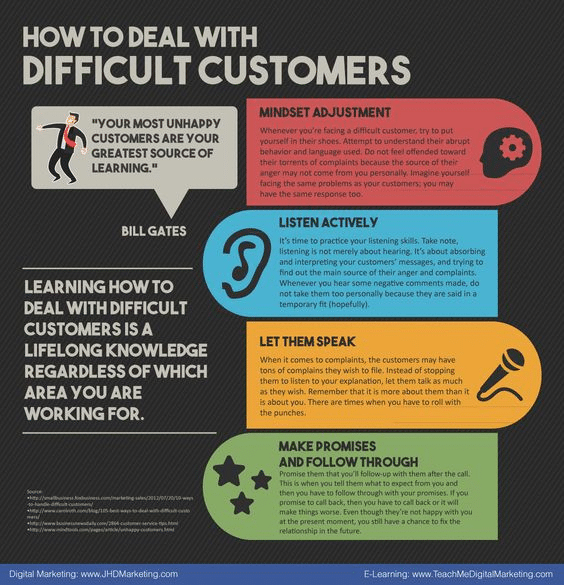How to De-escalate Tense Situations with Unhappy Customers
Turning Frown Upside Down: How to De-escalate Tense Situations with Unhappy Customers
The dreaded moment: a customer walks in, face tight with frustration, and before you even open your mouth, you know this interaction will be a challenge. Dealing with unhappy customers is an inevitable part of any business, but turning a potentially volatile situation into a positive one is a skill that can make the difference between a lost customer and a loyal advocate.
Here’s a guide to de-escalating tense situations and turning unhappy customers into satisfied ones:
1. Acknowledge and Validate:
- Listen actively: Resist the urge to interrupt or jump to solutions. Let the customer fully express their frustration. Use verbal cues like nodding and “I understand” to show you’re listening.
- Empathize: Put yourself in their shoes and acknowledge their feelings. Phrases like “I can see why you’re upset” or “That sounds really frustrating” go a long way in building rapport.
- Avoid defensiveness: Even if you feel the customer is being unfair, avoid getting defensive. It only escalates the situation.
2. Take Ownership and Apologize:
- Show responsibility: Even if the issue is not your fault, take responsibility for the customer’s experience. Saying “We’re sorry you’re going through this” shows empathy and willingness to help.
- Offer a sincere apology: Avoid generic apologies. Tailor your apology to the specific situation. If you made a mistake, own up to it.
3. Find Solutions:
- Collaborate with the customer: Don’t just offer solutions, involve the customer in finding the best option. Ask questions like, “What would make this situation better for you?”
- Be creative and flexible: Be willing to go the extra mile to find a solution that works for both parties.
- Set realistic expectations: Avoid promising what you can’t deliver. Transparency is key to building trust.
4. Communicate Clearly and Calmly:
- Speak slowly and clearly: Avoid rushing your words or using jargon the customer may not understand.
- Use a calm and friendly tone: Even if you’re feeling stressed, maintain a calm demeanor. Your voice can influence the customer’s emotions.
- Use nonverbal communication effectively: Maintain eye contact, smile, and use open body language to project openness and sincerity.
5. Follow Up and Follow Through:
- Keep the customer informed: Update them on the progress of the solution and follow through on your promises.
- Thank them for their patience: Express gratitude for their understanding and reiterate your commitment to their satisfaction.
- Seek feedback: Ask for feedback on how you can improve your service. This shows you value their opinion and are committed to continuous improvement.
Remember, every customer interaction is an opportunity to build loyalty. By mastering the art of de-escalation, you can turn even the most challenging situations into opportunities for positive customer experiences.

